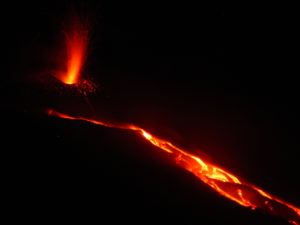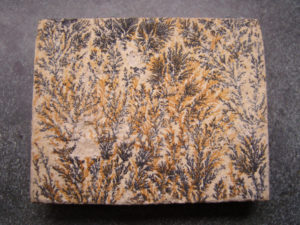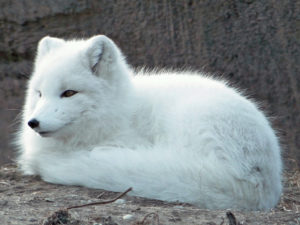SUNDAY, 11 FEBRUARY 2018
True wilderness is hard to find in today’s globalised world. But with a population of only 70,000 people, and a landmass nine times the size of the UK, Greenland remains relatively untouched by human activity. Fieldwork there is a blissful escapism from the 24/7 connectivity of everyday life.Location, location, location! I was part of a six person science team with the aim of collecting exciting new geological data. The location was a ~15 km² area of rock called the Skaergaard intrusion, a ‘frozen’ magma chamber in east Greenland, at 68˚N. Around 55 million years ago, a vast amount of basaltic magma intruded the earth’s crust here, but failed to reach the surface. The vat of magma cooled slowly, taking about 100,000 years to solidify. The same large-scale processes that formed the Skaergaard magma also caused the opening of the Atlantic Ocean along the mid-Atlantic ridge, pushing Greenland away from the UK.

Image: Marco Comparato
Through the erosive action of ice, wind and snow over millions of years, a cut-through of the intrusion is exposed at the surface today. It is a fantastic natural laboratory and certain horizons (discrete layers of rock), are known to be rich in platinum, palladium and gold. The intrusion was discovered by Lawrence Wager in 1930, whilst part of a British Arctic Air Route Expedition. Since then, many fundamental ideas in igneous petrology (the study of rocks cooled from magma) have resulted from its analysis.
Arctic colours The scenery in Greenland is dramatic and unforgiving. Jagged dark grey mountains sweep down to glacial rounded hills which sink into deep fjords, some days they are completely filled with icebergs, other days they are devoid of any. The colour palette you’re accustomed to shrinks to browns, whites and blues, and the only bright colours are our kit: tents, coats, inflatable motorboat (‘zodiacs’). As summer slipped into autumn, the few ground-hugging plants faded to a gorgeous range of purples, reds and oranges. At the start of the field season we had only a few hours of darkness, but the days dramatically shortened during our time there, and we pushed our daily schedule earlier to make the most of the light.
Camp life Our camp was comprised of a large, aggressively orange kitchen, sleeping tents, and a collection of aluminium boxes used to store our copious food supplies, kept at a distance from our tents to deter polar bears. Going to the makeshift toilet was a hundred-metre trudge down a steep slope of loose rocks, and a shower was merely something to dream about.
Fieldwork in such an environment is always a delicate balance between ‘science time’ and ‘camp time’. Life in camp is based around a routine, to ensure everything stays in working order – including ourselves. Our sleeping tents were surrounded by a bear alarm setup: metal poles with fishing line stretched between them and panic alarms attached to the fishing lines. If the line was broken, the alarm would go off and alert us – luckily we never had to deal with this for real.
The mush in the magma chamber My PhD looks at the physical behaviour of emulsions in porous media. Emulsions are a dispersion of one liquid within another liquid (like oil and water). While emulsions are widely studied in the petroleum industry, carbon sequestration and food science, my interest lies in how these liquids behave during the evolution of large bodies of molten rock trapped beneath the Earth’s surface. As magmas cool and solidify in the Earth’s crust, they can split into two immiscible liquids - one silica-rich and one iron-rich. The different physical properties of these liquids mean that they may separate from each other. This effects the chemical evolution of the magma and hence related ore deposits and the style (potential explosivity) of volcanic eruptions.
During the field season, I studied how permeable the mush (crystals surrounded by magma, forming a kind of slurry) was just before the intrusion solidified by looking at the variety of structures we could see in the rocks, formed from the very last ‘gasp’ of melt. There were dendritic structures forming fantastic ‘Christmas tree’-like shapes, believed to form as pressurised liquid is forced out between two planes. We saw examples of separated emulsions, iron-rich and silica-rich lenses of liquid, alongside blobby accumulations of melt scattered through the intrusion. These all provide information about how the very last bits of liquid were moving, just before Skaergaard solidified.

Manganese dendrites on limestone. Image: GorissM
Moving forward with the science will involve analysing the chemistry of the rocks I collected, and studying them under a microscope to reveal details the naked eye cannot detect. All of this will help build our understanding of how emulsions form and migrate in magma chambers, giving us insights into ore deposit formation.
The weather Despite its northerly latitude, the area has a favourable micro-climate attracting an abundance of narwhals and seals, and therefore it is a desirable hunting ground - though the local delicacy of mattak (raw whale skin and fat) reminded me of the gristle you occasionally happen across in a burger.
We were particularly lucky with the weather; crisp, sunny days were the norm. Arctic field seasons count anything under 50% “weather days” (i.e. it’s snowing, blowing a storm etc.) as a success, and we had only 3 days in 32. We were camped on the edge of Kangerlussuaq fjord, an area where the sea ice does not melt until June-July and then returns in October. The weather noticeably deteriorated towards the end of the trip, one morning we woke up to snow covering the high peaks around our camp; a hint of the winter wonderland the region transforms into for winter.
Arctic fauna and the environment We were largely unbothered by the local wildlife; we spotted plenty of seals and some whales, but only one polar bear swimming in Kangerlussuaq fjord. Our camp did, however acquire two cheeky Arctic foxes, who had a nasty habit of chewing through ropes: ropes for important things like our boat land anchor, tent guy lines and socks.

Image: Maia C
The town of Tassiliq is surrounded by glaciers and many are receding rapidly.The locals remembered when the majority of these glaciers reached the sea, and now few do. As an Earth Scientist I read papers about the impact of climate change, but too often fail to appreciate what the numbers physically mean for the environment. Such throw-away stories from people so in-tune with the landscape was a stark reminder of the fragility of this place.
Working together as a small team of scientists, 24/7, is an intense, but incredibly rewarding experience. Science is not just about laboratories and theory, for a geologist being outside gives context to all the data our machines spit out, and having a field area in the remote Arctic is an added bonus! Our departure from Greenland in the beautiful sunshine was bittersweet. While running water and a bed beckoned, the magical wilderness of Greenland is hard to walk away from. It is a truly spectacular environment and it was a privilege to have visited and worked in such a special place
Victoria Honour is a 3rd PhD student in Earth Sciences at Jesus College. Twitter: @victoria_honour
Header image: Victoria Honour
